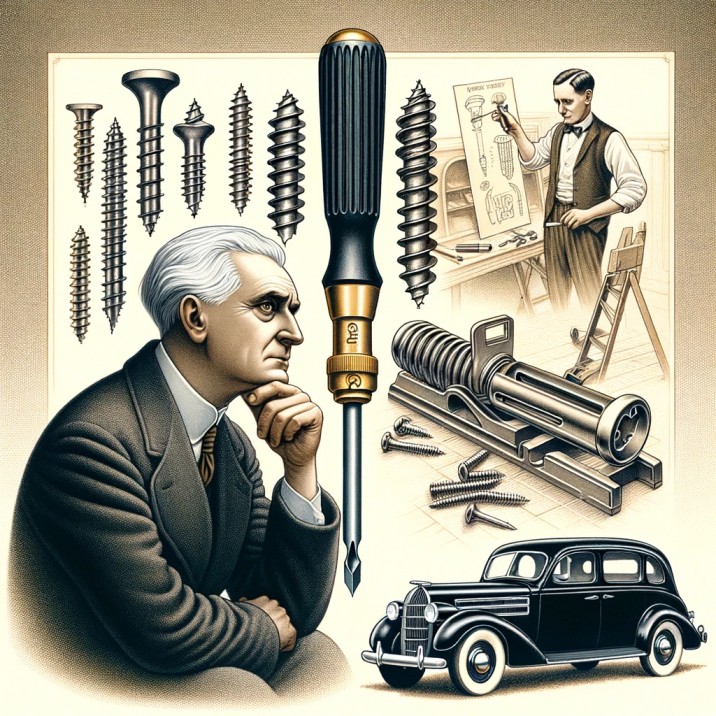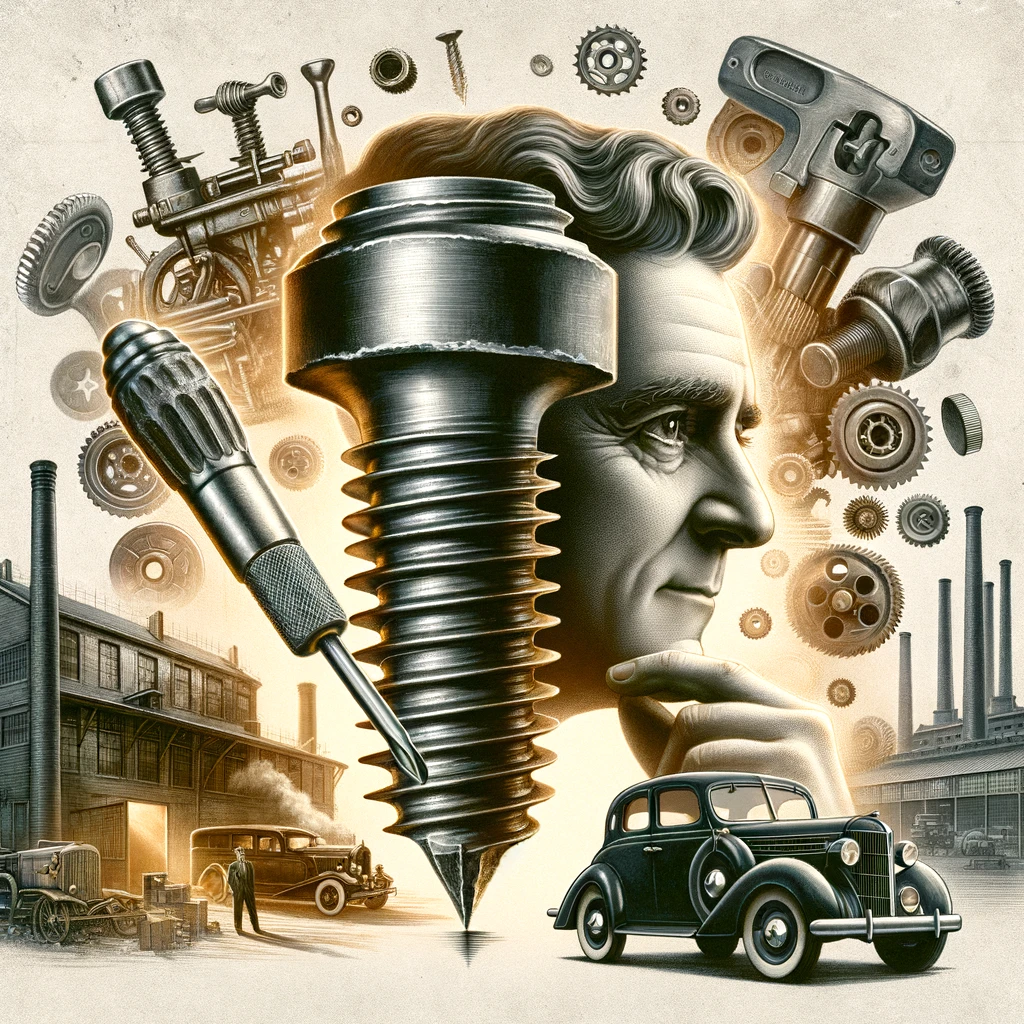We often ask yourselves Who invented the Phillips-head? The Phillips-head screw was invented by Henry F. Phillips. Phillips was a businessman from Portland, Oregon, and he developed and patented the Phillips-head screw and screwdriver in the early 1930s. His design was an improvement on the flathead screw and screwdriver, offering better grip and allowing more torque to be applied. The cross-shaped design of the Phillips-head allows the screwdriver to self-center, which is particularly useful in automated production processes. The Phillips screw quickly became popular, especially in the automotive industry, for its efficiency and ease of use.

The invention of the Phillips-head screw is a tale of innovation, business acumen, and timely partnership, which revolutionized the world of fasteners and became a staple in manufacturing industries worldwide.
At the heart of this story is Henry F. Phillips, a businessman from Portland, Oregon, who in the early 1930s turned his attention to the design of screws and screwdrivers. The screws and screwdrivers of that era, primarily flathead types, were adequate for general purposes but had limitations in terms of efficiency and efficacy, especially in an industrial setting.
Phillips observed these limitations and envisioned a screw design that would be more compatible with the increasing automation in manufacturing. The flathead screws often caused the driver to slip out of the slot, a phenomenon known as “cam-out.” This not only slowed down the assembly process but also posed a risk of damaging the screw, the driver, or the product being manufactured.
The pivotal moment in Phillips’ journey was his acquisition of a crude, cross-shaped socket screw design created by John P. Thompson. Thompson had failed to market the design successfully and eventually sold his self-centering design to Phillips in 1933. Phillips refined the design and engineered it to better meet the needs of large-scale, automated manufacturing. His design allowed the screwdriver to center itself in the head of the screw and stay in place more effectively, which significantly reduced cam-out. Furthermore, the design enabled the screwdriver to be ejected from the head of the screw when a certain level of torque was reached, preventing over-tightening or stripping of the screw.
After refining the design, Henry Phillips formed the Phillips Screw Company and patented his improved version of the cross-head screw in 1936. The timing of his invention coincided with the rise of mass production techniques, particularly in the automotive industry. Recognizing the potential of his invention, Phillips approached major automotive manufacturers.
The big breakthrough came when the American automaker General Motors, specifically its Cadillac division, tested the Phillips-head screw and found that it significantly improved the speed and reliability of assembly. GM’s adoption of the Phillips-head screw for the 1936 Cadillac model marked the beginning of its widespread use in the automotive industry. Other manufacturers soon followed, realizing the benefits of this innovative design.
The Phillips-head screw’s design not only improved manufacturing efficiency but also enhanced product reliability. Its success in the automotive industry led to its rapid adoption in other manufacturing sectors, including electronics, aviation, and consumer goods. The Phillips-head design became so ubiquitous that it became a standard, with sizes ranging from tiny precision screws used in electronics to large bolts used in construction.
Henry Phillips’ contribution to the world of tools and fasteners is a prime example of how a seemingly small innovation can have a profound impact on manufacturing and industry. His invention revolutionized the way products were assembled, making the process faster, safer, and more efficient. The Phillips-head screw and screwdriver are now so common that they are found in almost every toolbox and are used in countless applications worldwide.
The story of Henry F. Phillips and his revolutionary screw design is not just a narrative about inventing a better tool; it’s a story about identifying a need, improving upon an existing idea, and then successfully bringing that innovation to market at an opportune time. It highlights the importance of observation, innovation, and timing in the world of business and manufacturing. The legacy of the Phillips-head screw is a testament to how a simple yet ingenious idea can transform industries and become a part of everyday life.

